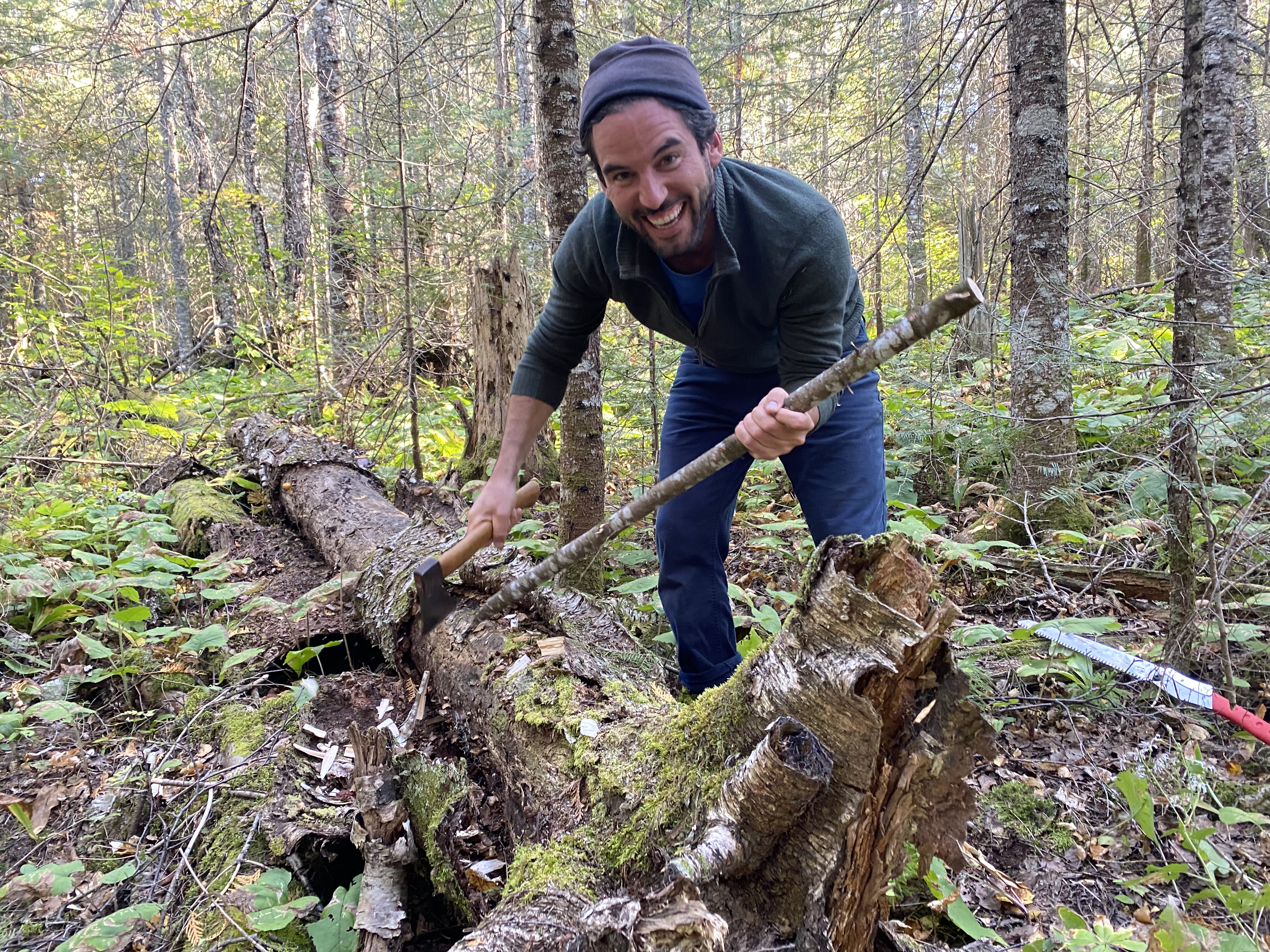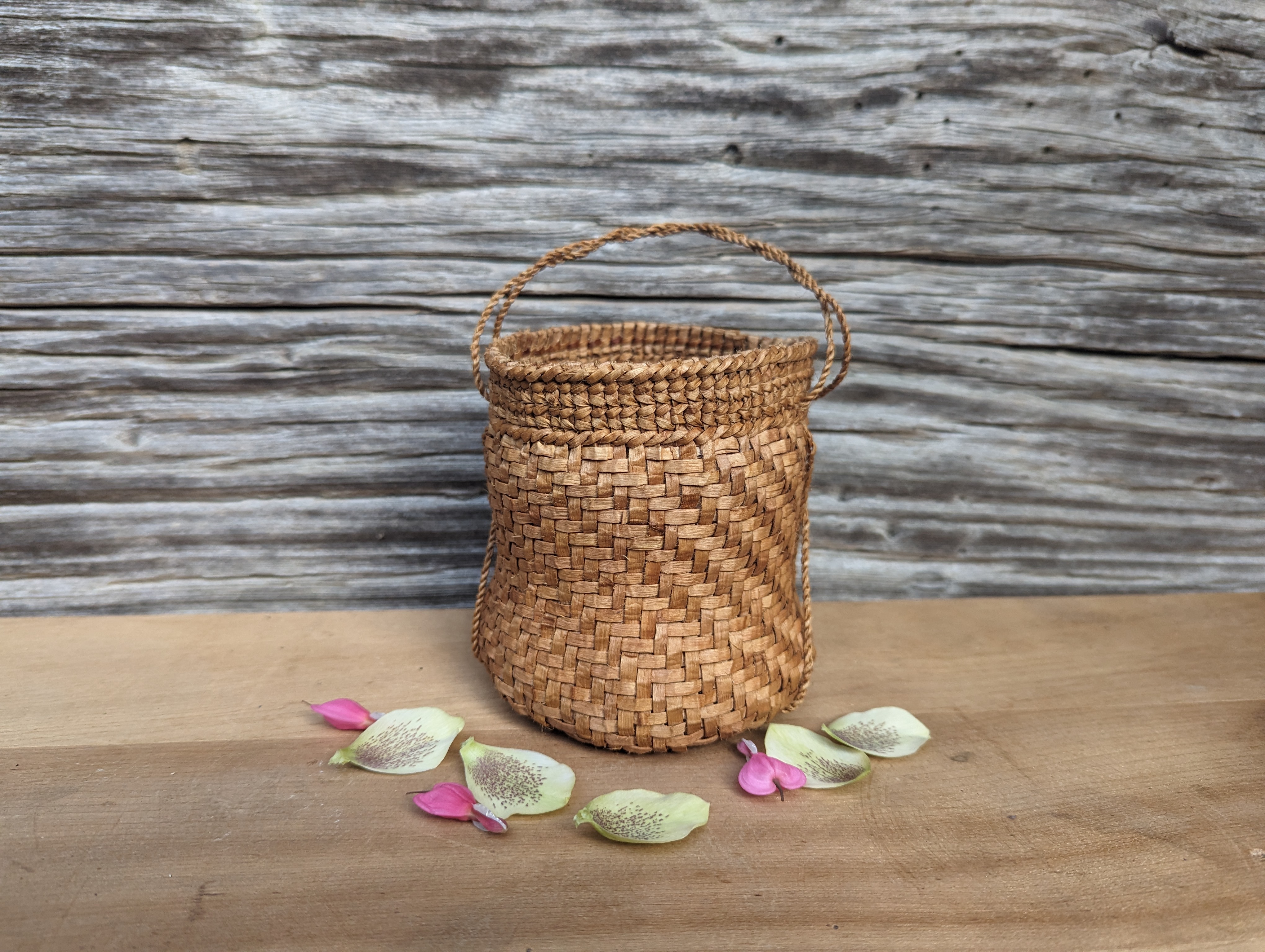
Meet Ty Sheaffer

Basketmaking starts in the forest. In their introductory blog post, Resident Artisan Ty Sheaffer writes about the slow and intentional process of weaving a basket from natural materials.
Hi! I’m Ty, a basket maker and hand tool aficionado, originally from the ancient flinty mountains along the Susquehanna River in central Pennsylvania. I'm very grateful to be part of the eighth ADP cohort and incorporated into the craft paradise that is the North House community for the next two years!
Baskets have historically been made of a wide diversity of materials: vines, grasses, ferns, leaves–even feathers and whale baleen! I make them out of trees–the wood, the roots, and especially the inner bark. Many trees can be fashioned into a basket with skill and a lot of patience; some you're probably familiar with such as black ash and birch bark, but also others that are less commonly used such as spruce, pine, pin cherry, elm, red maple and willow bark. That list expands significantly if we include the many wonderful southerly trees–white oak, tulip poplar, hickory, black walnut, and mimosa to name only a few.

None of these materials can be bought from a supplier or store of any kind (which I love!). The materials vary significantly from tree to tree. One willow will have beautiful straight and supple inner bark, and another growing nearby will be unusable. To begin the process of making a basket of this kind requires having some knowledge of who the trees are, and how various growing conditions such as soil type, drainage, amount of sunlight, insect and fungal damage, etc. will affect their bodies.
I, of course, love the process of actually weaving the baskets, creatively attempting to make what's imagined tangible, but I also love the part of learning who the trees are, and getting some insight into their lives through harvesting and processing them. Basket makers, as do many craftspeople, live in intimacy with the beings we work with, sort of like they are part of our extended family. It's a bit of a prerequisite. We talk about them, watch them grow up, maybe occasionally take selfies with them, and certainly worry and grieve for them when they are sick, which sadly is the case for most of the forests nowadays.

Many folks new to basketry don't realize that the process of weaving is usually less than half the time that goes into the basket, at least for the sort that I make. I like using only simple hand tools–axe, hand saw, knife, and a few homemade cutting tools–to harvest and process the bark, wood, and roots into long, consistent material for weaving. This processing and working the material down requires at least as much skill as the weaving itself, and for some materials, much more. It's an ongoing process of patience, of slowing down. It can't be rushed. Taking one's time in the preparation stage is the secret to making a really sweet basket.

I've been in Grand Marais for just over a month now and have been settling into the century-old retrofitted church that serves as the airy studio for the ADP residents. With the sweaters finally coming out and yellow leaves falling, it's time to take the materials that I harvested in the summer months and begin working them into a bunch of baskets. As I work this autumn and winter, sipping a cup of tea, I'll be thinking of the mosquitos and ground nuts in the humid forest where I harvested the poplar bark. I'll be thinking about the newborn fawn that was lying next to the willow I was harvesting, so perfectly camouflaged that it took me a few hours to even notice her lying there. And of course, the individual trees who generously gave their lives.
